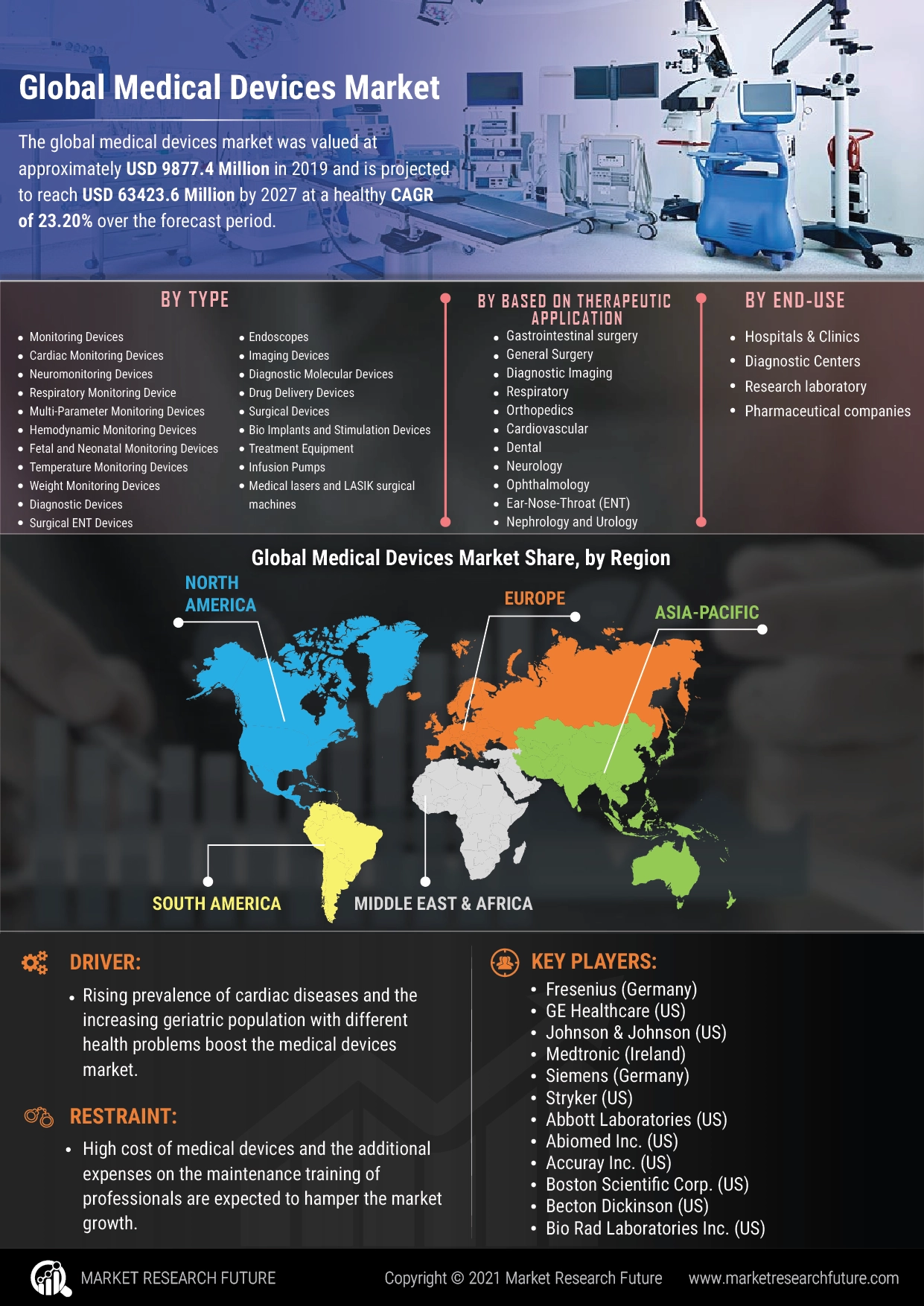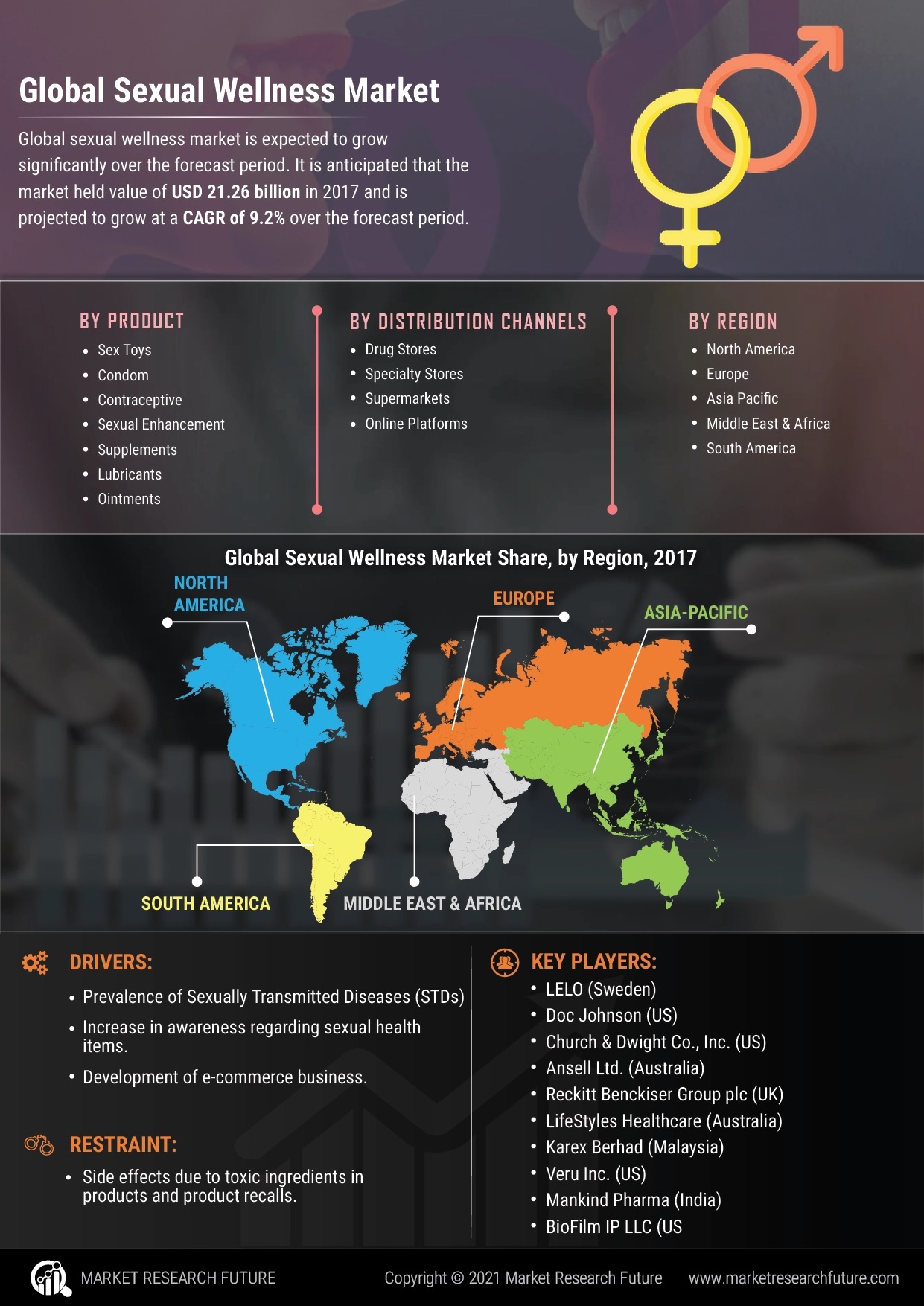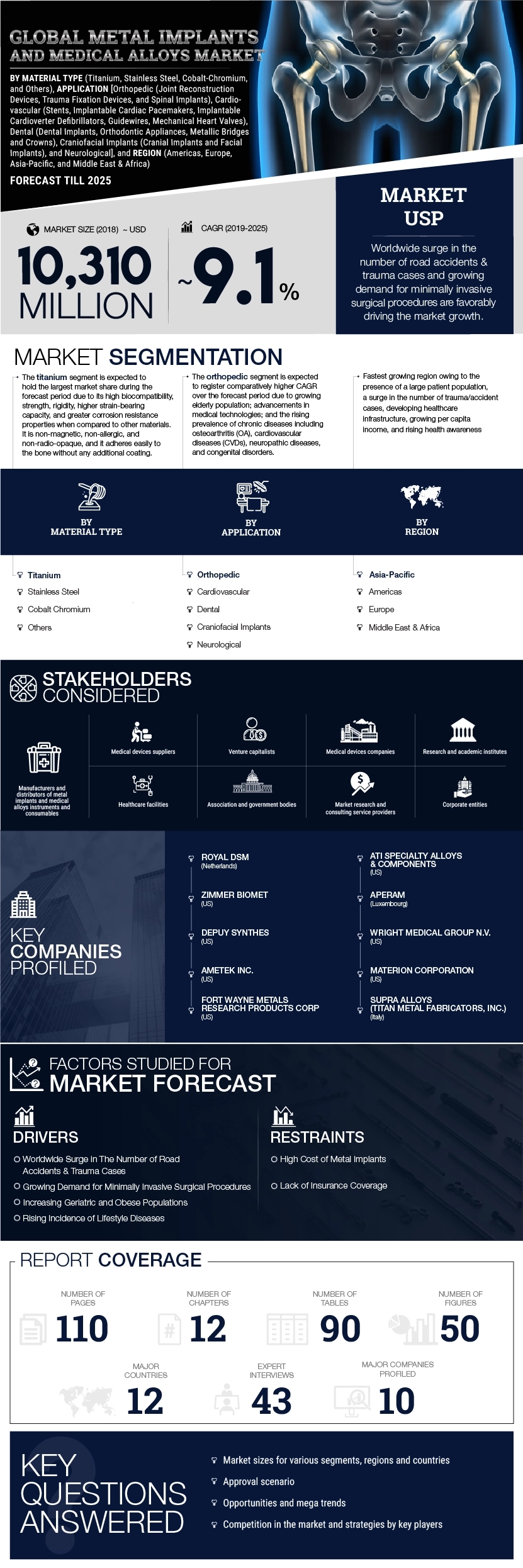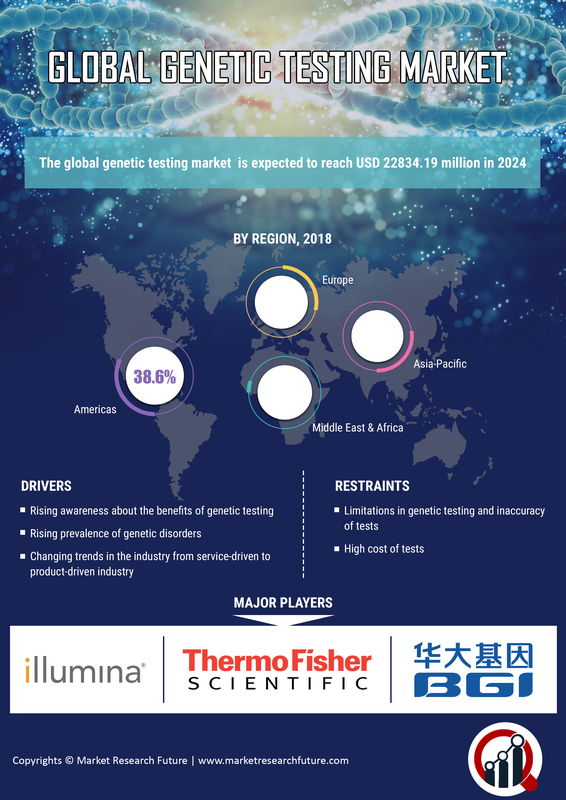Medical Devices Market Analysis
The medical devices market is likely to touch USD 6170.72 billion at a 22% CAGR between 2019-2025, reveals the new Market Research Future (MRFR) report. Medical devices, simply put, are products used for analysing, preventing, or treating any disease.
Numerous factors are propelling the global medical devices market share. These factors, as revealed by the latest MRFR report, include rising patient population, increasing incidence of accidents, extensive research and development activities in healthcare to develop innovative & advanced medical devices, increasing incidence of heart diseases, and rising elderly population with different health problems.
On the contrary, rising health concerns and decreased healthcare reimbursements are factors that may limit the global medical devices market growth over the forecast period.
Medical Devices Market Segmentation
The Market Research Future Report provides an inclusive segmental analysis of the global medical devices market based on end users, application, and product type.
By product type, the medical devices market has been segmented into bioimplants & stimulation devices, treatment equipment, surgical devices, diagnostic devices, drug delivery devices, monitoring devices, and others. Monitoring devices are again segmented into neuromonitoring devices, hemodynamic monitoring devices, temperature monitoring devices, cardiac monitoring devices, multi-parameter monitoring devices, fetal and neonatal monitoring devices, respiratory monitoring devices, and weight monitoring devices. Diagnostic devices are again segmented into endoscopes, imaging devices, surgical ENT devices, imaging devices, and others. Among these, cardiac monitoring devices will lead the market over the forecast period.
By therapeutic application, the global medical devices market has been segmented into dental, nephrology and urology, gastrointestinal surgery, ophthalmology, general surgery, ear-nose-throat (ENT), diagnostic imaging, neurology, orthopedics, cardiovascular, respiratory, and others.
By end user, the medical devices market is segmented into diagnostic centers, pharmaceutical companies, hospitals and clinics, and research laboratories.
Medical Devices Market Regional Analysis
By region, the global medical devices market covers the growth opportunities and recent trends across Europe, the Americas, the Asia Pacific (APAC), & the Middle East & Africa (MEA). Of these, the Americas will lead the market over the forecast period for the rising incidence of various chronic diseases such as neurological disorders, diabetes, and cancer. Chromatograph, microscope, and spectroscope are widely used for disease diagnosis.
The global medical devices market in Europe is predicted to hold the second-largest share over the forecast period. Factors adding to the medical devices market growth in the region include increasing innovations in various pharmaceutical companies for developing new drugs, increasing expenditure by the government to develop medical devices, developing economy, and the presence of many medical device manufacturing units in the region.
The global medical devices market in the APAC region will grow at a quick pace over the forecast period for the surging geriatric population having health problems and growing demand for healthcare products.
The global medical devices market in the MEA will have a small share over the forecast period. A major share will be held by the Middle East for the increasing government initiatives for healthcare.
Medical Devices Market Key Players
Leading players profiled in the global medical devices market report include Biotelemetry Inc. (US), Angiodynamics Inc. (US), Boston Scientific Corp. (US), Baxter International Inc. (US), Bio Rad Laboratories Inc. (US), Becton Dickinson (US), Accuray Inc. (US), Medtronic (Ireland), Abiomed Inc. (US), Stryker (US), Siemens (Germany), Johnson & Johnson (US), Abbott Laboratories (US), GE Healthcare (US), and Fresenius (Germany).
Browse Complete Report with TOC at https://www.marketresearchfuture.com/reports/medical-devices-market-2869
Medical Devices Industry News
February 2020: The US FDA has granted clearance to CM-1500, a cardiac monitoring system that will offer data to post-operative care providers, doctors, and clinicians. Made by Zynex Medical, this system will also simultaneously monitor different parameters of the patient’s body, such as skin humidity, skin temperature, PPG amplitude, ECG amplitude, heart rate, electrocardiogram, and bioelectrical impedance.



